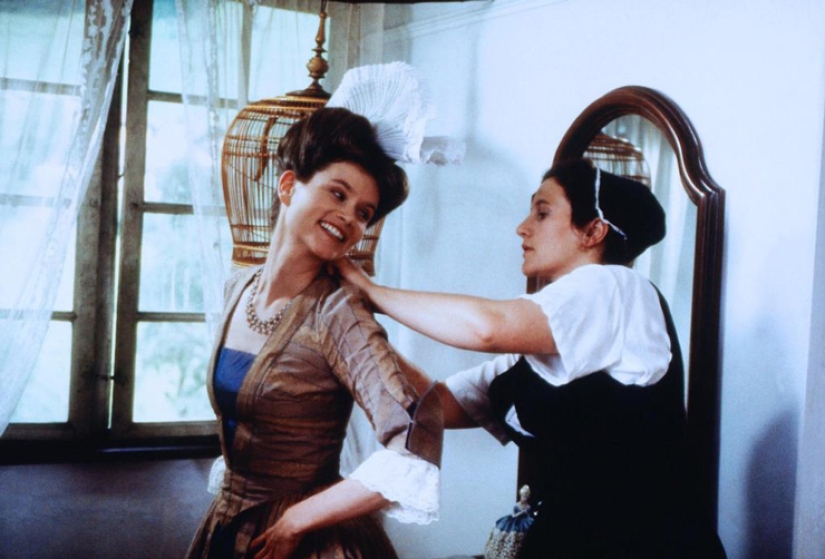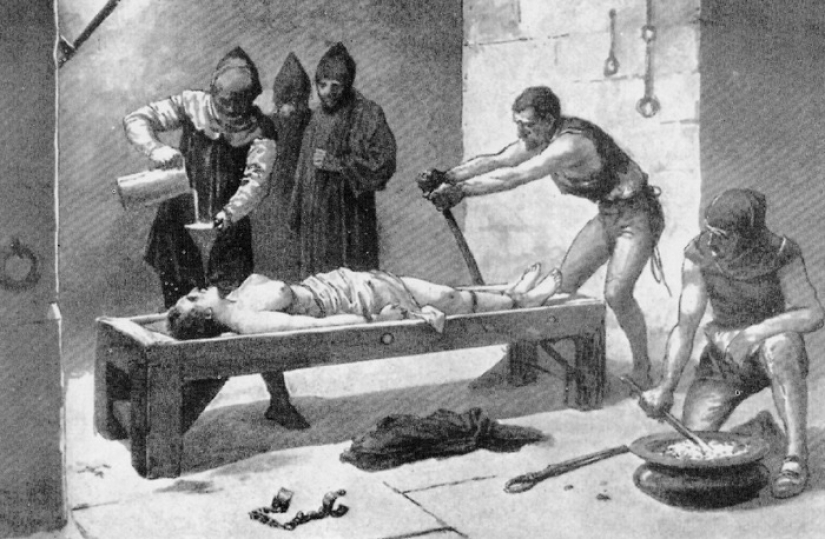The life and death of Anna Geldi, the last witch from Switzerland
Categories: History
By Pictolic https://pictolic.com/article/the-life-and-death-of-anna-geldi-the-last-witch-from-switzerland1.htmlThe witch hunt claimed the lives of thousands of women — young and old — between the XIV and XVIII centuries. Mass hysteria about witchcraft has spread throughout Europe, the UK and the USA. Denunciations poured in like a cornucopia: on neighbors, relatives, their own spouses. By the XVIII century, with the advent of the Enlightenment, the witch hunt began to decline. The last woman in Europe to be executed on charges of witchcraft was Anna Geldi. And today a whole museum is dedicated to her.
 Source: Cosmo
Source: Cosmo
Anna was born in 1734 in a place called Sennwald, in Switzerland. Historians know very little about her early life, and this is understandable — no one was interested in the biography of an unremarkable girl from a poor family. It is known that from an early age, Anna began working as a maid in the village to earn at least some money.

Being unmarried, she became pregnant by a visiting soldier, but the child died before she had lived a day. For that time it was commonplace — infant mortality was high. In addition, Anna could hardly afford a hearty meal, hygiene and rest during pregnancy. But the authorities accused Geldi of killing her baby herself. However, this could not be without meaning — women kept getting rid of children born out of wedlock, taking them out into the cold. Anna was sentenced to punishment at the pillory and six years of house arrest. Obviously, for Geldi, this would mean death — the inability to leave the house and earn money would inevitably lead the woman to starvation.
Anna fled to Glarus. There she got a job in the Zwicky family. She gave birth to a son from the owner of the house, although, of course, there was no question of any possibility of getting married.
Finally, at the age of 46, she falls into the family of a doctor and a magistrate, a very respected married man in the city of Jacob Tschudi. Apparently, Anna remained quite an attractive woman, because, according to some evidence, she and Jacob became lovers. There was probably a falling out between them. Unexpectedly, Jacob accused his maid of putting sharp needles in milk and bread, because he saw with his own eyes how his daughter vomited metal objects. However, then everything was limited to dismissal.

Probably, an angry and offended Anna threatened her former patron to tell everyone about their relationship, and for Jacob it would be a serious stain on his reputation. Frightened, he suddenly declared that his daughter continued to expel needles from herself and was convulsing, despite the fact that Anna Geldi was no longer in his house. And that means only one thing. Witchcraft.
The authorities of the canton of Glarus initiated a reward for her capture through a publication in the newspaper "Neue Zürcher Zeitung". Anna Geldi was captured in her home. There she hid in the basement, where her relatives hid her. The woman was taken into custody and transported back to the city of Glarus, where she was charged accordingly.
From historical documents we can see how Anna was treated. She was brutally tortured and bullied.

There is a museum dedicated to Anna Geldi in the town of Mollis in the canton of Glarus. Here is an analogue of the torture device on which she was tortured. Three times she was pulled up, her hands tied from behind, and, to make it more painful, her legs were tied to a stone. Unable to withstand the pain, Anna confessed to a deal with the devil, who appeared to her in the form of a black dog, and thereby signed her sentence.

The judges were considered educated pundits, but no one was confused that what Anna was accused of was simply impossible. Jacob Tschudi was a respectable man who had power and money, whereas Anna was a simple servant with a dubious reputation.

Anna was accused of poisoning and sentenced to execution by decapitation. This was a formal accusation, since Geldi was tried as a witch. In addition, according to the law, poisoning, which did not lead to anyone's death, was not punishable by a death sentence.
On June 13, 1782, at the age of 48, Anna Geldi was sentenced to death by the Glarus City Council and beheaded on the same day. Official statements and court records, which spoke about witchcraft, were destroyed immediately after the trial.
Nevertheless, this accusation was recognized as a witch hunt and caused public outrage throughout Switzerland.
Later, the Swiss Parliament recognized the case of Anna Geldi as a miscarriage of justice. It happened in 2008, 226 years later.

With the help of journalist Walter Hauser, author of several articles and books about Geldi, a museum dedicated to Anna Geldi was opened in 2007 in the town of Mollis in the canton of Glarus.
Keywords: 18th century | Witch | Museum | Hunting | Court | Switzerland
Post News ArticleRecent articles

Winter is a special time of the year, someone is afraid of her, someone is waiting for snow days to build a snowman or go down the ...

The heroes of their photos are used to humiliate others, cheerfully and carelessly shoot everything on the phone and post the ...
Related articles

About the dangers of gluten today, it seems everyone has heard of. This wave of French graphic designer Arthur sack (Arthur Coulet) ...

American photographer Andy Freeberg (Andy Freeberg) took an interesting series of photos about the caretakers of Russian art ...

Scalping scenes are often shown in old Westerns, and they are almost always accompanied by disturbing music and dramatic pauses. In ...

Every day, photographers around the world are looking for new ways to tell stories or capture something we haven't noticed ...